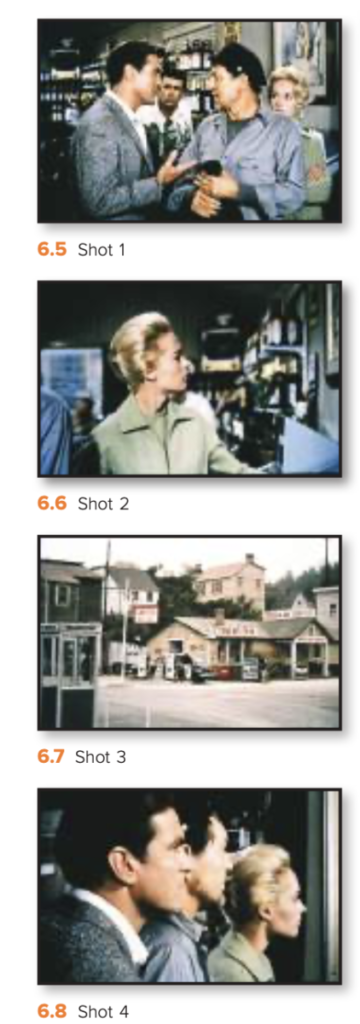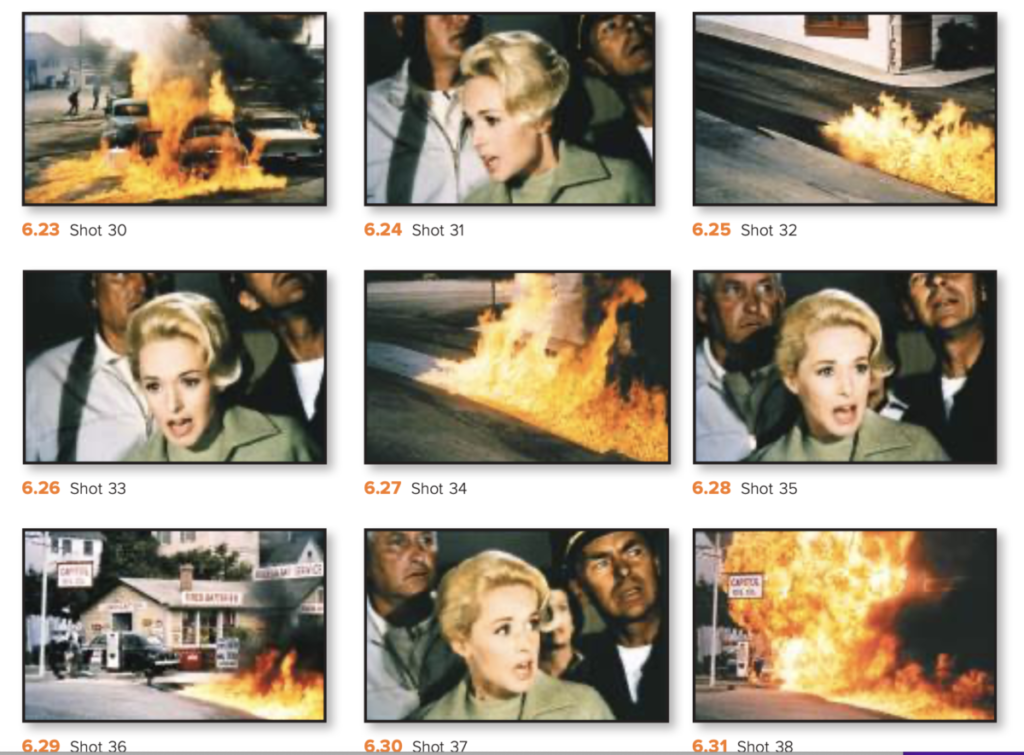Editing, at its core, allows the filmmaker decide what shots to include in a film and what shots to not include. For film editing, the editor have different choices to make in term of how they want to join the shots, which is the transitional phase from one end to the beginning of another. The different ways to join the shots include cuts, a fade in, a fade out, dissolve, and wipe. A cut provides an instantaneous change from one shot to another; a fadeout gradually darkens a shot to black; a fade in lightens a shot from black; a dissolve superimposes the end of shot a and beginning of shot b; a wipe means a shot replaces the other shot by means of a boundary line moving across the screen.
In addition to the different ways to join the shots, the editor could also cut one long shot into different length of small shots, utilize different shots to showcase a change of time and space. This can be seen in the movie The Birds, where the director Hitchcock could have presented one of the movie scene in one shot; instead, he divided the long shot into multiple different shots, giving him the power to direct our attention to where he desires. For example, the scene was about showcasing the attack on a location, and the first close up shot demands the audience to focus on the main characters, and the second close up shot demands that we focus on Melanie’s reaction, and the third shot shifts our attention again to the birds, with no other distractions in the frame. Ultimately, this example demonstrates how editing gives the editor control over the time and pacing of the movie, as well as the space where he/she wants us to focus.

In addition to different ways of joining shots and the power of editing, there are certain principles one have to follow when editing shots together. For example, the filmmaker link shots by close graphic similarities, making a graphic match. This could be seen in the movie Aliens, where the character’s face perfectly transitioned to the outline of the earth.

This graphic continuity in editing also extends to other aspects of continuity in films, such as spatial continuity and spatial relations in general. For example, in the movie The Birds, the shots were manipulated to show only aspects of the screen, meaning viewers could only seen the space the director wanted them to see. A great example of this manipulation of space is also called the Kuleshov effect, which basically means that the director could cut certain portions of the space, and the audience would create the rest of the space that is not shown in their head, which is also an example of constructive editing.
Lastly, besides continuities, contrast is utilized in films often to create shock values as well. This can be seen in graphical discontinuities, which is also known as graphical clash. This can be seen in the movie The Birds again, where the shot constantly switches from the flame to Melanie, and back and forth. This creates a strong contrast between Melanie’s still head in shock, and the moving trails of flames.

All in all, Editing plays an essential role in filmmaking, and editing is an art of joining different pieces of shots together, and it can have a huge impact on how the film is perceived. What are some of your favorite editing pieces in a film?